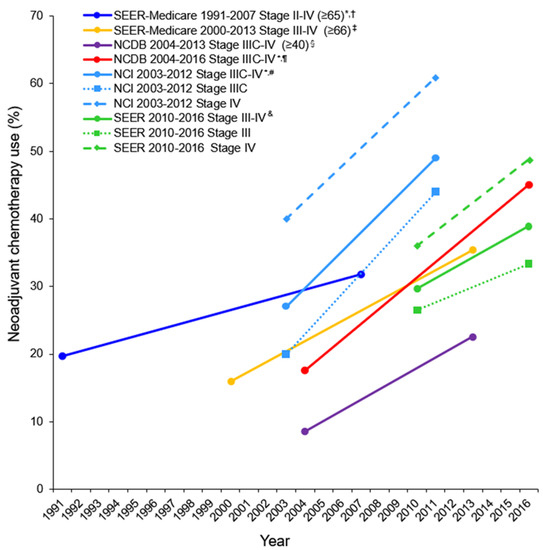|
Αρχειοθήκη ιστολογίου
-
►
2023
(138)
- ► Φεβρουαρίου (74)
- ► Ιανουαρίου (64)
-
►
2022
(849)
- ► Δεκεμβρίου (61)
- ► Σεπτεμβρίου (74)
- ► Φεβρουαρίου (65)
-
▼
2021
(2936)
- ► Δεκεμβρίου (59)
- ► Σεπτεμβρίου (180)
-
▼
Φεβρουαρίου
(325)
-
▼
Φεβ 04
(17)
- Palpable head on digital rectal examination: a rar...
- Extensive upper neck vascular lesion presenting as...
- Clinical and biological subtypes of B-cell lymphom...
- Benefit and danger from immunotherapy in myastheni...
- Preclinical modeling of surgery and steroid therap...
- Gene expression-based prediction of neoadjuvant ch...
- Safety, anti-tumor activity and T-cell responses i...
- Emergence of Enzalutamide resistance in prostate c...
- Cancers, Vol. 13, Pages 626: Emerging Trends in Ne...
- Targeting DNA damage repair functions of two histo...
- A novel mouse model of radiation-induced cardiac i...
- Therapeutic targeting of nemo-like kinase in prima...
- Optimized EGFR blockade strategies in EGFR addicte...
- Expression of the ace operon in Escherichia coli i...
- Comprehensive analysis of allergen-specific IgE in...
- Cancers, Vol. 13, Pages 625: The Immune Microenvir...
- Cocktail of carbohydrases from Aspergillus niger: ...
-
▼
Φεβ 04
(17)
-
►
2020
(1624)
- ► Δεκεμβρίου (293)
- ► Σεπτεμβρίου (234)
- ► Φεβρουαρίου (28)
-
►
2019
(13362)
- ► Δεκεμβρίου (19)
- ► Σεπτεμβρίου (54)
- ► Φεβρουαρίου (5586)
- ► Ιανουαρίου (5696)
-
►
2018
(66471)
- ► Δεκεμβρίου (5242)
- ► Σεπτεμβρίου (5478)
- ► Φεβρουαρίου (4835)
- ► Ιανουαρίου (5592)
-
►
2017
(44259)
- ► Δεκεμβρίου (5110)
- ► Σεπτεμβρίου (5105)
-
►
2016
(7467)
- ► Δεκεμβρίου (514)
- ► Σεπτεμβρίου (1038)
- ► Φεβρουαρίου (793)
Αναζήτηση αυτού του ιστολογίου
Πέμπτη 4 Φεβρουαρίου 2021
Palpable head on digital rectal examination: a rare case of uterine incarceration causing obstruction and perforation of an ileal pouch in mid‐term pregnancy
Extensive upper neck vascular lesion presenting as middle ear mass
|
Clinical and biological subtypes of B-cell lymphoma revealed by microenvironmental signatures [Research Article]
|
Benefit and danger from immunotherapy in myasthenia gravis
|
Preclinical modeling of surgery and steroid therapy for glioblastoma reveals changes in immunophenotype that are associated with tumor growth and outcome
|
Gene expression-based prediction of neoadjuvant chemotherapy response in early breast cancer: results of the prospective multicenter EXPRESSION trial
|
Safety, anti-tumor activity and T-cell responses in a dose-ranging phase 1 trial of the oncolytic peptide LTX-315 in patients with solid tumors
|
Emergence of Enzalutamide resistance in prostate cancer is associated with BCL-2 and IKKB dependencies
|
Cancers, Vol. 13, Pages 626: Emerging Trends in Neoadjuvant Chemotherapy for Ovarian Cancer
|
Targeting DNA damage repair functions of two histone deacetylases, HDAC8 and SIRT6, sensitizes acute myeloid leukemia to NAMPT inhibition
|
A novel mouse model of radiation-induced cardiac injury reveals biological and radiological biomarkers of cardiac dysfunction with potential clinical relevance
|
Therapeutic targeting of nemo-like kinase in primary and acquired endocrine-resistant breast cancer
|
-
This protocol presents an in vitro live-imaging phagocytosis assay to measure the phagocytic capacity of astrocytes. Purified rat astrocyt...
-
Association française pour l'étude du cancer [Imatinib in the treatment of chronic myeloid leukemia in Morocco]. Related Articles [Im...
-
A Case of Miller Fisher Syndrome Due to the Use of Cemiplimab : No abstract available Miller Fisher syndrome is a rare, acquired n...


